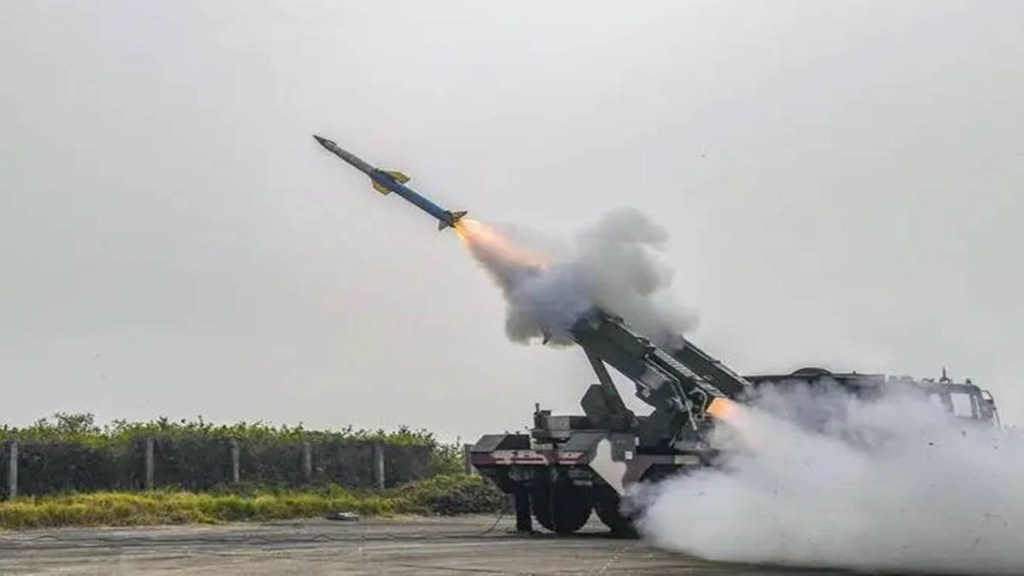By Dr Santanu Mandal
India has always been a strategic player in the global geopolitical landscape, and as such, the country’s defence industry sector has always been of key significance. It should come as no surprise that India has one of the largest defence budgets in the world, behind the USA and China.
Yet, India is still one of the largest defence importers globally. In fact, the Stockholm International Peace Research Institute’s “Trends in International Arms Transfers, 2021” factsheet has named India as the top weapons importer during 2017-2021.
However, India is keen on reversing the trend and becoming a top global exporter of defence equipment. Towards this, the government has launched various initiatives, including the Defence Production Policy of 2018 (DPrP-2018), ‘Atmanirbhar Bharat’ and Mission DefSpace. The objective of these initiatives is to incentivise and popularize home-grown technology towards becoming a self-reliant India, which will boost the country’s security, economy and innovation.
It should be pointed out that India is well on the way to becoming self-reliant in the defence sector. Over the past five years, the defence outlay and exports have increased eight times. Today, India exports defence equipment to more than 75 countries across the world. In what is considered the first major Indian defence sale of indigenously produced equipment, India entered into an agreement with the Philippines for the sale of BrahMos supersonic cruise missile. This could be the first of many, as Prime Minister Narendra Modi has stated that in the coming years, the target for India’s defence export is USD 5 billion or Rs 40,000 crores.
Indigenous Expertise in Missile technology
India has been working on missile technology for several decades. After realising the importance of guided missile weapon systems in modern warfare, the government set up a Special Weapon Development Team in 1958. It was this team that was expanded into a full-fledged laboratory – Defence Research and Development Laboratory (DRDL)– in 1961.
However, it wasn’t until 1982 that DRDL took on the design and development of various types of missile systems and began producing them under the Integrated Guided Missiles Development Programme (IGMDP). Over the years, India has successfully developed five missiles – Prithvi, Agni, Akash, Trishul, Nag – under the IGMDP.
Over the past few years, there has been a quantum jump in the development of advanced systems and platforms for missile technologies; today, India is looking to sell missiles to the world. This is a huge achievement, given that just a few decades ago, there were sanctions and restrictions from many international bodies to prevent India from developing its own missile programme.
Given India’s geopolitical position and security levels required, missile technologies need constant upgradation, which also translates to ramping up production capabilities. This requires the active participation of the private sector – missiles are one of the key items in the import embargo list, released by the Ministry of Defence in 2020, to promote indigenous production and self-reliance.
A total of 411 defence items and equipment are being produced by various companies and organisations in the country and procured by the government under various initiatives such as the Defence Production Policy of 2018 (DPrP-2018), “Atmanirbhar Bharat” and Mission DefSpace.
Increasing Role of the Private Sector in Securing the Supply Chain and Providing Technology for Self-reliance
With the aim to harness expertise and build production capability, the Defence Research and Development Organisation (DRDO) has also opened up partnerships with the private sector. Missile technology, especially supersonic (> Mach 1) and hypersonic (> Mach 5) technology, is a very niche technology that requires lightweight engineering materials for structural and functional applications.
Carborundum Universal Limited (CUMI), a global leader in material science, has signed a ToT (Transfer of Technology) for the manufacture of ceramic radomes from DRDO’s Research Centre Imarat (RCI) laboratory. Radome is the nose of the missile, which withstands a high thermal shock resistance and protects the radar antenna electronic equipment from the weather along with radio-wave transparency. The technology requires high thermal shock resistance, and CUMI’s ceramic radomes have proven to be an effective solution for the same.
CUMI has also partnered with leading institutions including IIT-Madras, IIT-Patna, Amrita Viswa Vidyapeetham, CSIR-NAL, CSIR-CG&CRI, DRDO and ISRO for the development of cutting-edge technology through sponsored projects and commercialisation of technology through ToTs. Through in-house R&D, joint development projects (JDPs) and ToTs, the company has developed niche technologies like nano-crystalline diamond coating technology, thin-film coating technology for aerospace & defence applications, light-weight ceramics for body/vehicle armour, and is in the process of developing solid-oxide fuel cell technology and solid oxide electrolyser technology.
The missile technology sector has the potential to revolutionise defense capabilities and make India self-sufficient in the domain of defence. The success of organisations like CUMI in developing cutting-edge technologies and contributing to the Indian government’s goals is a testament to the country’s potential in the field of missile technology. It is thus safe to say that with the private sector rising to the vision of Atmanirbhar Bharat, India is well on the path to becoming self-reliant in defence and a global leader in missile technology.
The author is Sr. General Manager & Head of the DSIR-approved R&D unit of Industrial Ceramics Division of CUMI, India.
Disclaimer: Views expressed are personal and do not reflect the official position of the author’s institution or policy of Financial Express Online. Reproducing this content without permission is prohibited.
